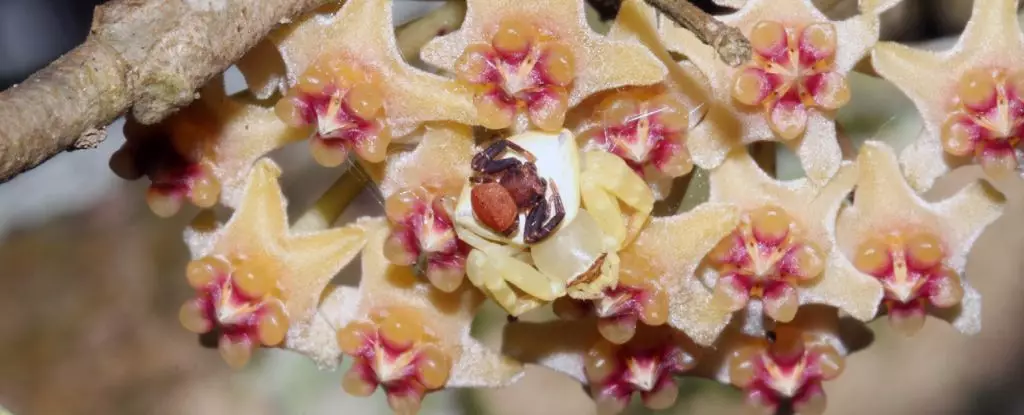Nature has a way of surprising us with its incredible adaptations for survival. Various species of animals have developed remarkable ways to blend into their environments as a means of protection from predators. From birds and octopuses to frogs and caterpillars, creatures around the world have mastered the art of camouflage. One such example is the masked crab spider (Thomisus guangxicus), a species found in the rainforests of China.
Recently, environmental scientists Shi-Mao Wu and Jiang-Yun Gao made a fascinating discovery in the rainforests of Yunnan University. They observed a male and a female masked crab spider working together to disguise themselves as a flower. This cooperative mimicry is a behavior that has not been extensively documented in the wild before. The male spider imitates the appearance of pistils and stamens of a flower, while the female mimics the fused corolla, creating the illusion of a complete flower when they are together on a plant.
Unlike many other spiders that spin webs to catch their prey, crab spiders are ambush predators that rely on their camouflage to ambush unsuspecting insects. The grabby front legs of crab spiders give them a crab-like appearance, hence their name. In the case of the masked crab spider, there is a noticeable sexual dimorphism between the male and female. The male is significantly smaller and has darker coloration compared to the female, raising questions about the male’s camouflage strategy.
Wu and Gao’s observation of cooperative mimicry in masked crab spiders opens up a new realm of possibilities in understanding spider behavior. While the researchers believe this could be the first documented case of such behavior, further observation is required to confirm this hypothesis. The stacked spiders on the plant could be a mere coincidence or a part of mating behavior. By studying other species of crab spiders with similar sexual dimorphism, researchers may uncover more insights into this intriguing behavior.
One intriguing aspect of Wu and Gao’s discovery is the possibility of co-evolution between the plant and the spider. If the masked crab spiders and the plant they mimic are found to have co-evolved, it could provide valuable insights into their fascinating behavior. By delving into the molecular clocks of both species, researchers may be able to unravel the intricacies of this unique relationship.
The case of cooperative mimicry in masked crab spiders sheds light on the remarkable strategies that species employ to survive in their environments. By closely observing these creatures in their natural habitats, scientists can gain a deeper understanding of the complexities of nature’s adaptations. The masked crab spider and its mimicry tactics serve as a reminder of the countless wonders that await discovery in the natural world.


Leave a Reply